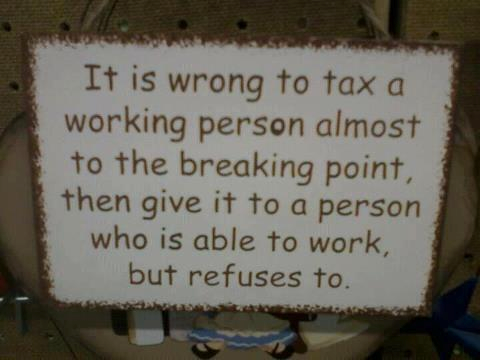
They are the Hoovers because they all pretty much suck.
At the dinner table–the symbol of familial unity–they eat chicken out of a bucket, off of paper plates and drink pop served in McDonald’s collectible glasses. The nutritive value of the meal is equal to the emotional and spiritual value of this communion. A message on the answering machine interrupts the dissonance of conflicting wills. The seven-year-old Olive has, by default, qualified for the Little Miss Sunshine Pageant. Reluctantly, the family must make the long trip from Albuquerque to Redondo Beach, California so that Olive can attempt to achieve her dream and become a beauty queen.
There are many reasons that Little Miss Sunshine is my favourite movies. The acting is brilliant and the screenplay works on all levels. It’s also funny, poignant, philosophical and redemptive.
The movie is redemptive, but some Christian viewers would find this movie offensive.
That’s an Awful Movie
(SPOILER ALERT)
One of the characters is homosexual, but most Christians would be able to get past this, The grandfather would be a little more difficult to excuse; he uses heroin and advises his grandson to have sex with as many women as he can. It has strong language and a t-shirt that declares, “Jesus Was Wrong.” If that’s not enough, a seven-year-old girl dances, albeit naively, like a stripper.
Some might ask, “Even if there is something redemptive in this movie, is it worth seeing all the ‘garbage’ just to find that particle of truth?”
I find far more than a particle of truth in this film. Perhaps, part of the problem is that we have different approaches to understanding narrative. If the truth is a piece of a story that can be extracted from the whole and held up and declared to be a true bit, then an argument could be made that there aren’t a lot of true bits in this movie and quite a few untrue bits.
I recently wrote a post about using the term “Implication” instead of “Application” when determining our response to Bible stories. We can interact with any story, including a movie, with the principles of Implication.
Implication
Implication is a more appropriate approach to narratives of any kind for it maintains the integrity of all elements of the story of which the “idea” or “moral” is but one.
The first definition for term implication in the Oxford English Dictionary is the one I have in mind: “The action of involving, entwining, or entangling; the condition of being involved, entangled, twisted together, intimately connected or combined.”
The truth of a narrative is communicated through the experience it conveys–the experience in which we are entangled. Viewers of Little Miss Sunshine will find themselves entangled in the story.
Every character has a dream, hope or driving motivation. Significantly, these motivations are completely individual and they tend to divide each family member from the others. Olive dreams of being beautiful; Richard wants to have success in his career; Duane want nothing more than be free from home and his means of escape is to become a test pilot; Grandpa seeks pleasure in his waning years; Cheryl dreams of a happy family, and Frank seeks recognition and love.
Entwined into Little Miss Sunshine
Which of these dreams do you share? Everyone has a longing for something. These dreams are consistent with the Biblical idea that we were created for more than what we experience in this life. This is the place where I become entangled in the story, for I am every character in this movie.
Each character is a long way from achieving his or her dream. Olive lacks poise and grace, and the sort of beauty that would win a beauty pageant. Richard will never sell his self-help plan because it is mostly empty cliché. The picture of a previous husband sitting on the entry table in the opening scene shows that Cheryl is divorced. Her family is far from harmonious. Duane hates everyone, especially his family–he has stopped speaking and will remain silent until he is in flight school. Grandpa’s hedonism is self-destructive; his heroin use has gotten him thrown out of the nursing home. Frank has attempted suicide because he’s lost his boyfriend and reputation. Each character struggles with his or her own limitations as well as external circumstances.
It is very clear that, as individuals, they need something; as a family they need something; they need redemption. This too is consistent with the Biblical view of humanity. People were made to be in communion with each other. They began their journey seeking their own desires and their lives were dissonant and broken. They came together around a quest; they thought the quest was getting Olive into a stupid beauty contest, but it turned out the quest was the unification of their family around the protection of its most vulnerable.
When I become entwined into this story, I feel the needs and longings of these characters as my own. I feel the partial meeting of these needs as the family comes together in the crisis.
What’s True in Little Miss Sunshine?
If this way of experiencing narrative truth in a story isn’t good enough for you, there are plenty of “Application” truths here as well. If you are looking for the nugget of truth in this movie, there are many.
Here is a partial list:
- We all dream of being something more than we can possibly be because we aren’t nearly the creatures we are supposed to be.
- We are limited by our sin and the effects of sin in the world.
- We do things out of love, but sometimes these things are not all that appropriate (Grandpa taught Olive the only dance he was familiar with); it’s a good thing that the love in our intentions is powerful enough to eclipse the inadequacy of the results.
- To be naïve is not the same as to be innocent.
- Even in our brokenness, we can be a blessing to others.
- Actions are more powerful than words (the scene where Olive brings Duane back into the bus), and that’s why the Incarnation is so incredible.
- Human beings were made for community and within community, we can transcend our individual weaknesses.
- Grace, forgiveness, and LOVE are incredibly powerful.
- Self-sacrifice is fundamental to the expression of love.
- Suffering is important for growth.
- The world’s standard for winners and losers is completely wrong.
- There is a loving presence at the centre of the universe that orchestrates all things for our good.
- Life is tragic and beautiful and also pretty funny.
- Beauty pageants are stupid.







